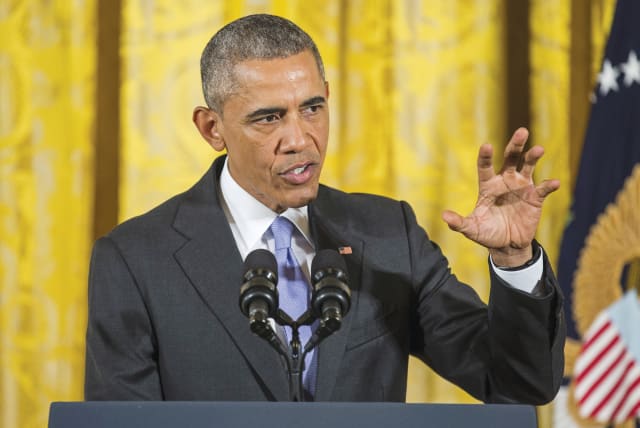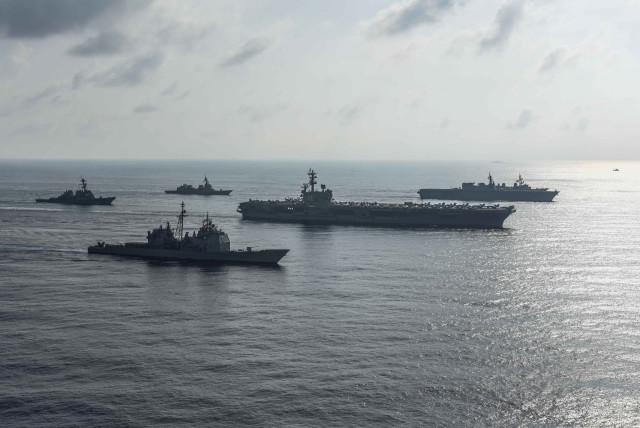Global corridors collide in Middle East amid Israel-Hamas war - opinion

American efforts to reach a normalization agreement between Saudi Arabia and Israel before the end of President Joe Biden’s term have been stymied by the circumstances of the Gaza war.
What is currently happening in the Middle East, with conflicts and tensions in Gaza, the Red Sea, Iraq, Syria, and other regions, is, in my opinion, one of the results of strategic miscalculations by the US since 2015.
This has been particularly true since the Obama administration focused its efforts on signing the Joint Comprehensive Plan of Action with Iran, paving the way for the US to reduce its interest in the Middle East and the Gulf region and focus on the Asia First strategy.
This direction has led to Iran having a free hand in the Middle East and even openly boasting that it controls four Arab capitals and is preparing to occupy the fifth, in a region that has long been one of the main pillars of American influence and dominance in the new global system.
What has happened in recent years is not so much a decline in American power but, rather, a decline in the willingness and ability of the US to use its power to defend its interests in the region. The quantitative and qualitative indicators continue to reflect the gap in the balance of power between the US and its allies and strategic competitors.
It is against this background that the dimensions of the economic corridor projects between East and West can be understood, in particular the Chinese Belt and Road Initiative, in which the Middle East is a central pivot, versus the economic corridor connecting India to Europe via the Gulf, Jordan, and Israel.
Two strategic projects
The Middle East, or a large part of it, is the common denominator of the two strategic projects. There are several strategic issues at stake in these projects, the main one being that they are an expression of competition between the US and China.
The US-backed economic corridor, launched about a full decade after the Belt and Road project began, is of deep import to Washington because it has strategic dimensions that are as significant to the US as the economic and commercial interests the corridor represents to everyone from India to European countries.
Although the Belt and Road link is a gigantic project involving 155 countries around the world, the economic corridor is an invaluable soft power lever that can change the geopolitical scene in the Middle East. The two driving forces behind the projects, China and the US, have different and intertwined strategic visions.
While the US project is linked to US efforts to normalize relations between Saudi Arabia and Israel, Chinese mediation, which has succeeded in reconciling the positions of Riyadh and Tehran and bringing them closer together, is not detached from preparing opportunities for the success of the Belt and Road Initiative.
Observers agree that this mediation has strengthened China’s position in the Gulf region and the Middle East.
By contrast, American efforts to reach a normalization agreement between Saudi Arabia and Israel before the end of President Joe Biden’s term have been stymied by the circumstances of the Gaza war between Israel and the Hamas movement, especially as Saudi Arabia has linked the step toward normalization to the creation of a Palestinian state – a proposal that the Netanyahu government has so far rejected.
The point is that China has achieved a large part of the goals of the Belt and Road Initiative by expanding its economic and strategic influence in a region that has long been part of the US sphere of influence. The economic corridor project offers Washington an opportunity to reclaim the initiative and try to stop Chinese expansion in a key strategic hot spot.
This is all the more true as the US has recognized the risk of a loss of influence and a decline in American deterrence as a result of the Gaza war, allowing some pro-Iranian militias to test the limits of US power and even target the strategic American naval fleets that are the spearhead of US global influence, and in particular the confrontation with the rise of China.
Although the two initiatives aim to bridge the gap between competing regional powers, the Iran-Israel conflict remains one of the main geopolitical obstacles, especially for the economic corridor. However, given the general geopolitical tensions in the Middle East, other threats to the Belt and Road project cannot be dismissed.
The main challenge for these initiatives and projects is the geopolitical environment full of regional tensions and conflicts, with the Palestinian issue as one of the main keywords, especially with regard to a real and practical integration of Israel into a regional security system that guarantees stability and is geared toward development.
The most pressing question for observers here is: Is the US-China competition an obstacle to the stability of the Middle East, helping to deepen the conflict between the regional powers and maintain strategic polarization? Or will the desire of some of these powers – especially Saudi Arabia and the UAE – for security and stability manage to create the necessary environment for pursuing their ambitious development plans, in order to avoid the impact of polar competition on the region and work toward peace and coexistence, notwithstanding all the factors of disagreement and divergence?
The writer is a UAE political analyst and former Federal National Council candidate.
Jerusalem Post Store
`; document.getElementById("linkPremium").innerHTML = cont; var divWithLink = document.getElementById("premium-link"); if (divWithLink !== null && divWithLink !== 'undefined') { divWithLink.style.border = "solid 1px #cb0f3e"; divWithLink.style.textAlign = "center"; divWithLink.style.marginBottom = "15px"; divWithLink.style.marginTop = "15px"; divWithLink.style.width = "100%"; divWithLink.style.backgroundColor = "#122952"; divWithLink.style.color = "#ffffff"; divWithLink.style.lineHeight = "1.5"; } } (function (v, i) { });

